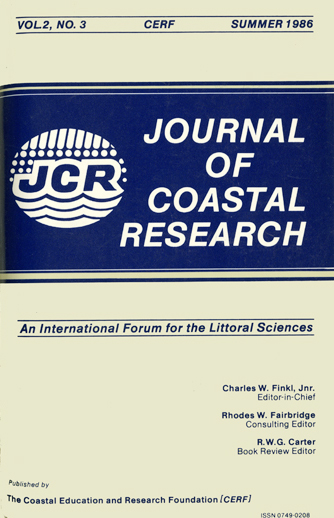Geomorphic Evolution of a Holocene Beach-Ridge Complex, LeFevre Peninsula, South Australia
Keywords:
Beach ridges, coastal geomorphology, coastal progradation, longshore transport, radiocarbon dating, sand barrier, South Australia, spitsAbstract
Intensive drilling and radiocarbon dating are used to interpret the Holocene evolution of LeFevre Peninsula, located on the eastern shore of Gulf St. Vincent, South Australia. This beach-ridge complex is in a low to medium energy environment where longshore sediment drift is dominant. Sedimentation commenced at the end of the Postglacial Marine Transgression around 7,500 calendar yrs BP, indicating a similar sea level history to east Australian coastal barriers. A major sediment pulse between 7,500 and 5,500 yrs BP produced a rapid northward progradation of the regressive lithofacies. Atter 5,500 yrs a reduced rate of sediment supply and a change in coastline orientation contributed to spit recurvature and a flared beach-ridge pattern. The longshore spit progradation and shore parallel backbarrier facies of LeFevre Peninsula contrast with the shore-normal development of east Australian barriers which tend to block bedrock embayments and constrain backbarrier sedimentation.


